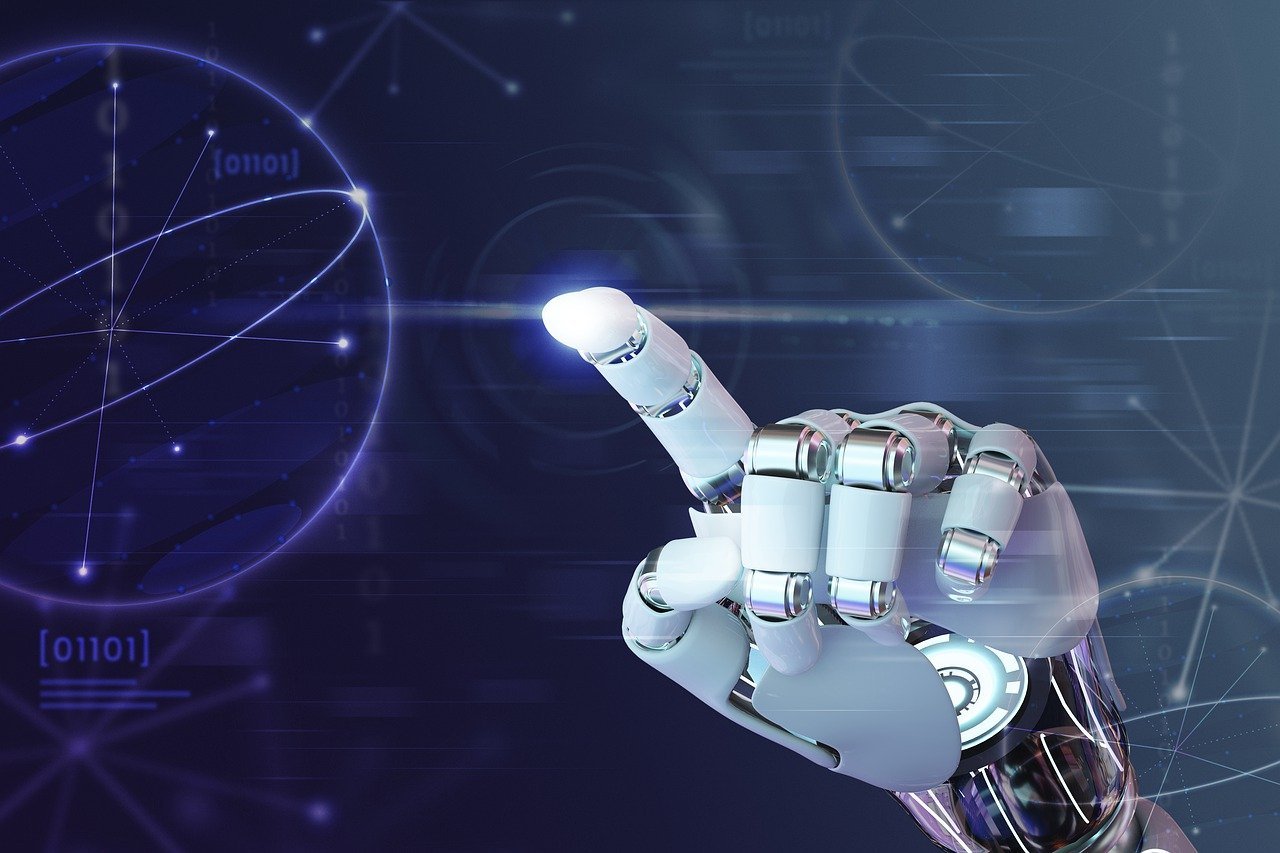In 2025, artificial intelligence (AI) continues to evolve at an unprecedented pace, reshaping the way we live, work, and interact with technology. From healthcare to entertainment, AI is not only transforming industries but also creating new possibilities for the future. The innovations in AI this year are pushing the boundaries of what was once thought possible, and several key advancements are emerging that will have a lasting impact on various sectors.
Here are some of the most significant AI innovations of 2025:
1. Generative AI: Revolutionizing Creativity and Content Creation
Generative AI has made remarkable strides, with models now capable of producing highly sophisticated content across multiple formats. In 2025, the scope of generative AI extends beyond just text and images to creating entire immersive experiences, including videos, 3D models, and music.
Video Generation: AI systems have advanced to the point where they can generate high-quality videos from simple text descriptions. This capability is revolutionizing content creation for filmmakers, marketers, educators, and game developers. Whether it’s creating virtual environments or entire movies based on a script, the possibilities are limitless.
3D Models and Virtual Reality: AI now can create interactive 3D models of complex objects, environments, and even human anatomy. This technology is particularly impactful in industries like architecture, medicine, and gaming, allowing for better visualizations and virtual walkthroughs.
AI in Music Composition: AI-generated music has evolved from simple loops to complex compositions that adapt to specific moods or genres. AI music models are now used for film scores, personal playlists, and even live performances, offering composers an innovative tool for creative expression.
2. Artificial General Intelligence (AGI) Progress
While true Artificial General Intelligence (AGI)—AI capable of performing any intellectual task a human can—remains an ambitious goal, significant progress has been made in 2025. AGI systems are now able to learn from a variety of inputs, including visual, auditory, and sensory data, to better understand the world and make decisions.
Multimodal Learning: AGI systems are increasingly capable of processing and integrating information from multiple sources, such as images, sound, and text. This enables more nuanced understanding and interaction, enhancing capabilities in robotics, autonomous vehicles, and advanced AI assistants.
Autonomous Scientific Research: One of the most exciting applications of AGI in 2025 is its use in research. AGI systems can autonomously conduct experiments, analyze vast datasets, and even propose new theories. This accelerates progress in fields like medicine, physics, and environmental science, enabling researchers to solve problems faster and more efficiently.
3. AI in Healthcare: Predictive Diagnosis and Personalized Medicine
AI’s role in healthcare has grown exponentially in 2025, with several key innovations that promise to improve patient outcomes and streamline medical processes.
Predictive Diagnostics: AI-powered diagnostic tools are now more accurate than ever before, capable of analyzing medical images, genetic data, and patient histories to predict diseases before symptoms appear. These systems are improving early diagnosis of conditions like cancer, heart disease, and neurological disorders, allowing for proactive treatment and better patient outcomes.
Personalized Medicine: AI is enabling the creation of highly personalized treatment plans by analyzing individual genetic makeup, lifestyle factors, and medical history. These AI systems help doctors tailor therapies that are more effective and have fewer side effects, leading to better patient care.
AI-Powered Health Assistants: Virtual health assistants are becoming commonplace, helping individuals manage their health on a daily basis. These AI-driven tools track everything from diet and exercise to medication adherence, providing personalized recommendations and connecting patients with healthcare professionals when necessary.
4. AI in Autonomous Systems: Smarter Robots and Vehicles
AI-powered robots and autonomous vehicles have seen significant advancements in 2025, with smarter, more capable systems entering various industries. These systems are becoming more autonomous, adaptable, and efficient, making them valuable assets in sectors like logistics, manufacturing, and transportation.
Robotic Surgery: AI-driven surgical robots now have the ability to perform highly complex procedures with precision and efficiency. These systems are improving patient outcomes by reducing human error, enhancing surgical accuracy, and enabling less invasive procedures that lead to quicker recovery times.
Autonomous Vehicles: Self-driving cars, trucks, and drones have reached a new level of sophistication in 2025. AI is now able to handle more complex driving scenarios, including city traffic and adverse weather conditions, making autonomous vehicles safer and more reliable. These advancements are also contributing to the development of smart cities, where AI-powered vehicles communicate with each other and infrastructure to optimize traffic flow and reduce accidents.
5. AI-Powered Cybersecurity: Threat Detection and Prevention
As the number of cyberattacks continues to rise, AI is playing a crucial role in defending against online threats. In 2025, AI-driven cybersecurity systems are becoming more advanced, offering proactive and real-time protection for businesses and individuals.
Threat Detection: AI is now capable of detecting even the most sophisticated cyber threats, such as zero-day vulnerabilities and advanced persistent threats, by analyzing patterns of network activity and user behavior. These systems can respond to threats in real-time, minimizing damage and preventing data breaches.
Automated Incident Response: AI-powered security systems can automatically take action when a potential threat is detected, such as isolating compromised systems or blocking malicious traffic. This reduces the response time to attacks, allowing organizations to mitigate risks before they escalate.
Adaptive Defense: AI systems are also learning to adapt to new and evolving cyber threats. By continuously analyzing data and updating threat models, AI-driven cybersecurity tools are becoming more resilient, capable of staying ahead of hackers and malware developers.
6. AI Ethics and Governance: Ensuring Responsible AI Use
As AI continues to permeate all aspects of society, ethical considerations and governance have become increasingly important. In 2025, AI ethics has become a priority for governments, corporations, and research institutions, with efforts focused on ensuring that AI technologies are used responsibly and transparently.
AI Accountability: There is growing emphasis on ensuring that AI systems are explainable and accountable. Efforts are being made to create regulations and standards that ensure AI systems make decisions that are understandable and traceable, preventing discrimination or unintended consequences.
Bias Mitigation: AI systems are being developed with greater focus on minimizing biases in their decision-making processes. Researchers are working on techniques that reduce the impact of biased training data, ensuring that AI systems treat all individuals fairly and equitably.
AI for Social Good: Many AI projects in 2025 are focused on addressing global challenges, such as climate change, poverty, and inequality. AI is being used to optimize resource distribution, analyze environmental data, and provide insights into public health crises, contributing to social good on a global scale.
7. AI in Augmented Reality (AR) and Virtual Reality (VR)
AI is enhancing both augmented reality (AR) and virtual reality (VR) experiences in 2025, making these technologies more immersive and intuitive.
AI-Enhanced AR/VR Interactions: AI is now being used to improve the interactivity and realism of AR and VR environments. AI-driven avatars, real-time object recognition, and natural language processing allow users to interact with virtual worlds in a more intuitive and lifelike manner.
Training and Education: AR and VR are being used in training programs across various industries, from medicine to engineering. AI models personalize these experiences, adapting scenarios to the learner’s skill level and providing real-time feedback to optimize learning.
Conclusion: The Future of AI in 2025
The AI innovations of 2025 are a testament to the rapid growth and potential of artificial intelligence. From healthcare and education to robotics and cybersecurity, AI is transforming industries and improving our everyday lives. As these technologies continue to advance, we can expect even more groundbreaking developments in the years ahead, with AI playing a key role in shaping the future of humanity. However, with these advancements come important ethical and regulatory challenges that must be addressed to ensure AI is used responsibly and equitably.

